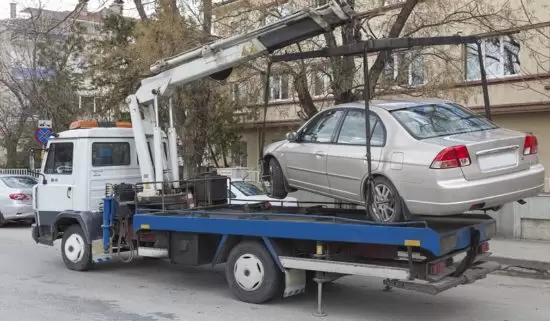You frequently hear about America’s crushing student loan debt, but cars are not far behind — especially subprime auto loans.
While student loans are approaching $1.5 trillion, outstanding auto loans topped the $1.2 trillion mark in the third quarter of 2017, according to the New York Federal Reserve.
Subprime borrowers (with credit scores below 620) hold almost one-quarter of the dollar value of auto loans. Given that level of risk, it’s no surprise that over 4% of auto loans are delinquent by 90 days or more and repossession is a real threat.
Subprime lenders are more likely to repossess autos since they service higher-risk clients. However, Jalopnik reports that one lender – Credit Acceptance – expects to repossess 35% of the cars that it finances every year.
Absorbing That Default Rate
It’s difficult to absorb that default rate without charging high interest rates to make up the difference. Borrowers who already have difficulty paying receive rates that make monthly payments even higher – leading to a cycle of defaults and repossession.
If you have subprime credit, how can you get a loan and avoid repossession? Start with an understanding of how much you can really afford to pay for a car. Review your budget (and if you don’t have one, make one).
Find out the highest monthly payment you can afford to make given your income and other expenses. Don’t forget to include gas, insurance, and maintenance costs. Online calculators are available to help you budget and estimate your total auto ownership costs.
Shop Around
Next, shop around for both cars and lenders (even with poor credit, you have options). Check with the Better Business Bureau and online reviews to see how other customers have fared. As you search, be realistic in your expectations for both the car and the interest rate of your loan.
Don’t be tempted to extend your loan term out extra years to lower your monthly payment. You’ll be tempted to overspend and you could be making payments beyond the car’s useful life.
What if you’re already bordering on default? You’ll need even greater fiscal discipline to make up the late payments along with the corresponding late fees and any other penalties.
Negotiate with Lenders
However, if you simply can’t afford to make the full payments, you may have to negotiate with the lender for payment terms that you can afford.
Your current lender may offer refinancing, but the terms are likely to be poor. Refinancing costs may neutralize any gains on interest rates and monthly payments.
If necessary, explore your options to downgrade to a cheaper car. Dealers and lenders would rather find affordable monthly payments than go through the expense and hassle of repossessing your car.
Stay Current
However, this may not be a viable option if you are behind on the payments on your existing car or your car is worth less than the amount that you owe. A lender may be reluctant to roll any of those negative values into your new car loan.
Long term, your goal should be to increase your credit score. Why is it subprime? Have you missed payments, racked up excessive credit card debt, or defaulted on a loan?
The cure is time and financial discipline. Cut back spending to where your budget creates an occasional surplus that you can use to pay down debt.
Subprime lenders know their clients are at high risk for default and missed payments. If you have subprime credit, be the exception to that rule. Budget wisely and you won’t have to worry about auto repossession – and you’ll also be on your way to better credit.
This article was provided by our partners at moneytips.com. Photo ©iStockphoto.com/BERKO85
If reading this blog post makes you want to try your hand at blogging, we have good news for you; you can do exactly that on our sibling site, Saving Advice. Just click here to get started.

